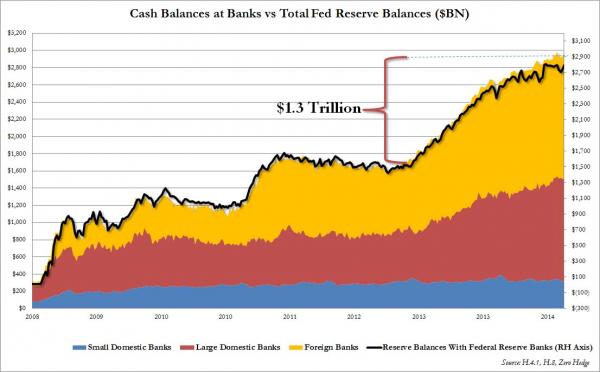Aside from the S&P 500 of course, which made billionaires out of millionaires (even if it failed to make billionaires into trillionaires this time around - we will have to wait for QE4 or QE5 for that), some may wonder: who was the biggest beneficiary of QE3? It certainly wasn’t the US middle class, which has seen its real wages decline in 6 of the past 7 months, and its disposable income is back at levels not seen since the mid-1990s. No, the biggest winner of QE3 is the same entity that we noted benefited the most from QE over the past 6 years, and which even the WSJ realized was the primary beneficiary of the trillions in cash created out of thin air by the Fed, when in late September Hilsenrath wrote “Fed Rate Policies Aid Foreign Banks“… something we first said back in 2011 with “Exclusive: The Fed’s $600 Billion Stealth Bailout Of Foreign Banks Continues At The Expense Of The Domestic Economy, Or Explaining Where All The QE2 Money Went.”
So when it comes to the Fed’s QE3 generosity to foreign banks, what was the real number?
Here is the answer.
The first chart below shows that since starting in December 2012, when QE3 was formally launched, and continuing through today, the Fed injected some $1.3 trillion reserves with banks, which has manifested as extra cash held by various banks operating in the US, both domestic, but most importantly, foreign.

So how does this increase in bank cash assets look like when broken down by banking group? The answer is shown below:

And the bottom line:
- Small domestic banks, such as your mom and pop regional bank which is anything but Too Big To Fail: change in cash: zero.
- Large domestic banks, think JPM’s CIO group, i.e., its London Whale division which used precisely this “excess” Fed cash to try to corner the IG market and blow up in the process: call it just under $600 billion in cash as a result of QE3.
- And the winner, with over $700 billion in extra cash added thanks to QE3, is:Â foreign (mostly insolvent European) banks.

